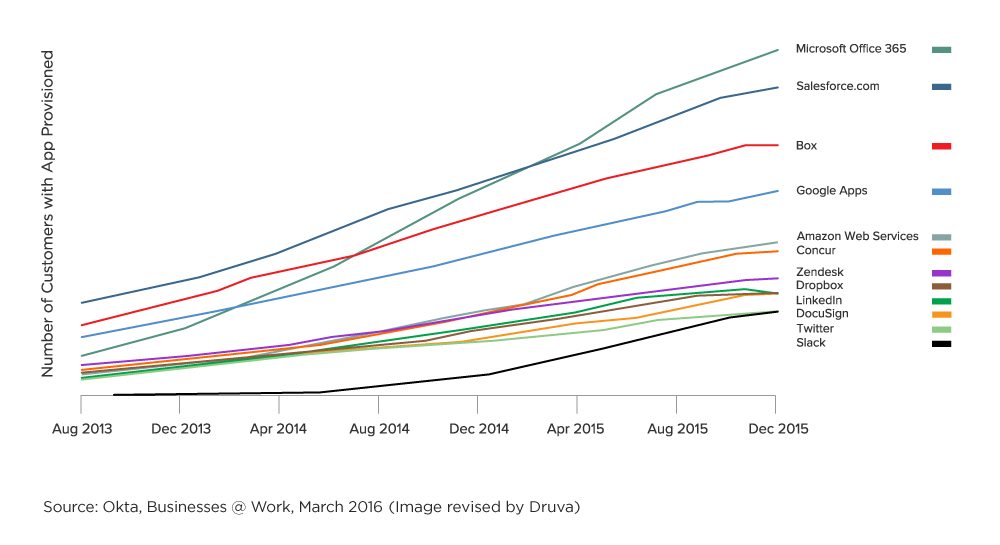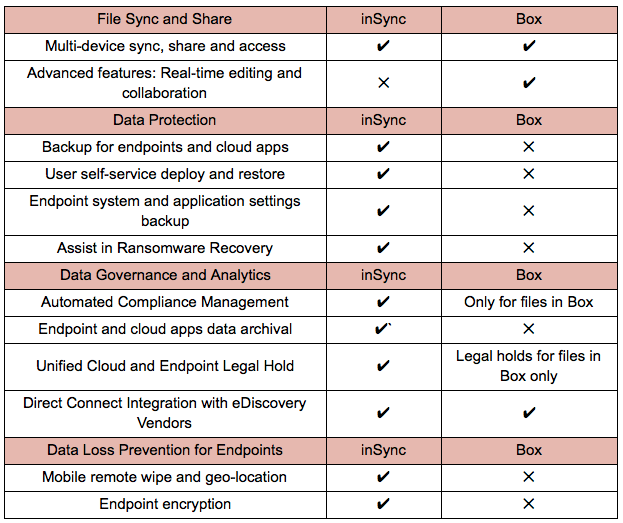ENDPOINTS INCLUDE LAPTOPS, SMARTPHONES AND TABLETS. CLOUD APPLICATIONS INCLUDE OFFICE 365 (ONEDRIVE, EXCHANGE ONLINE), GOOGLE APPS FOR WORK AND BOX.
Why Box and Druva inSync are complementary technologies
As shown above, Box is an excellent EFSS solution for advanced features like real-time editing and collaboration. However, Druva inSync is required to close the gaps in data protection and governance for information residing outside of Box and protecting the accidental deletion of Box data. To this end, Druva has partnered with Box to provide a single access point for viewing and managing dispersed end-user data. With this integration, inSync can now aggregate end-user data on endpoints and cloud applications – including Box’s cloud – to offer organizations a centralized conduit for corporate information governance.
Box also recently announced its partnership with Amazon Web Services (AWS) to offer customers more regional storage options (Box Zones). Through its partnership with both AWS and IBM, the company now offers Box Zones to countries around the world, enabling global organizations to meet local data residency requirements and better align with the new Global Data Privacy Requirement laws (GDPR) to be effective by 2018.
Organizations worldwide requiring locally kept data can easily utilize Box as an EFSS solution for its advanced sync features (real-time editing and collaboration) and leverage inSync to protect data dispersed across endpoints and cloud applications, including Box. With Druva natively built on the AWS cloud and supporting regional segregation of data this ensures customers can have a one-to-one mapping of regions with Box and Druva to stay aligned with their data privacy requirements.
No matter where it resides, inSync will provide a single pane of glass for end-user data and provide customers with complete visibility and control of information.
Ready to see Druva inSync up close? Check out these popular resources:
To learn more about Druva’s expanded support for data protection coverage to Box, Google Apps and Exchange Online, read the news, and review our expanded cloud apps protection capabilities here.
For real world tips on how to address the growing risks of dispersed data across your organization, download our latest report below.



